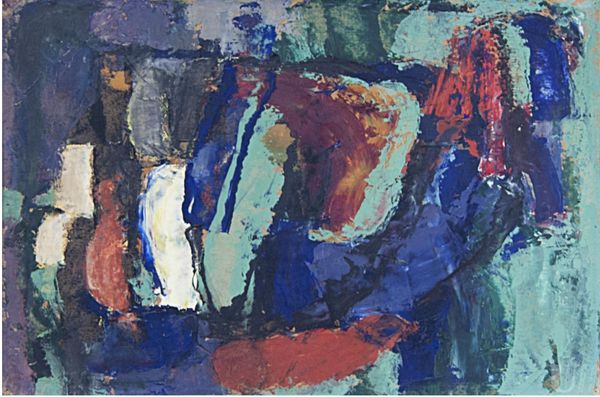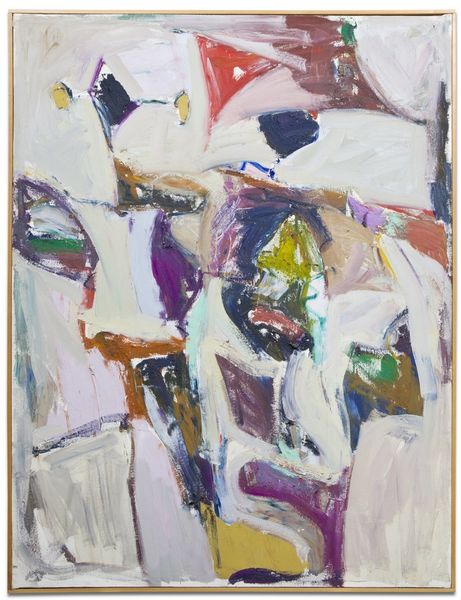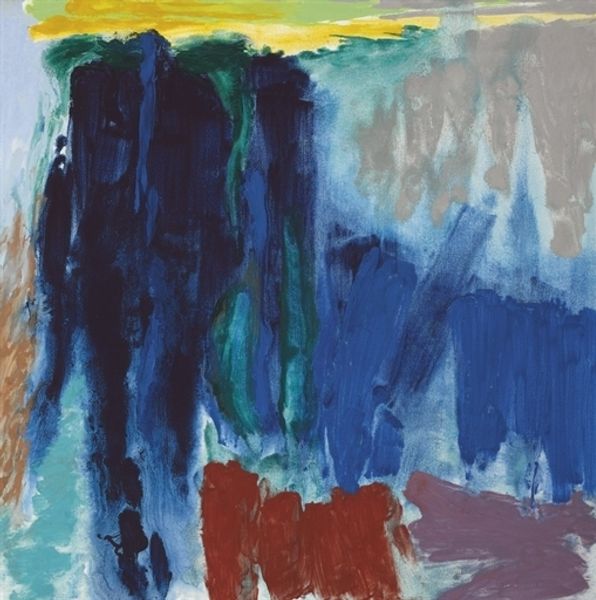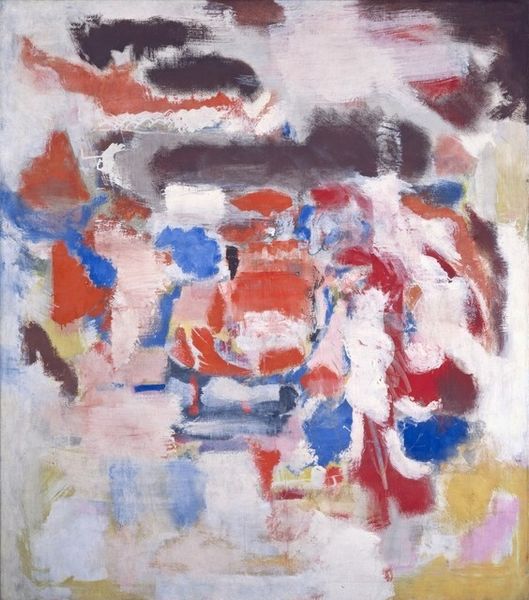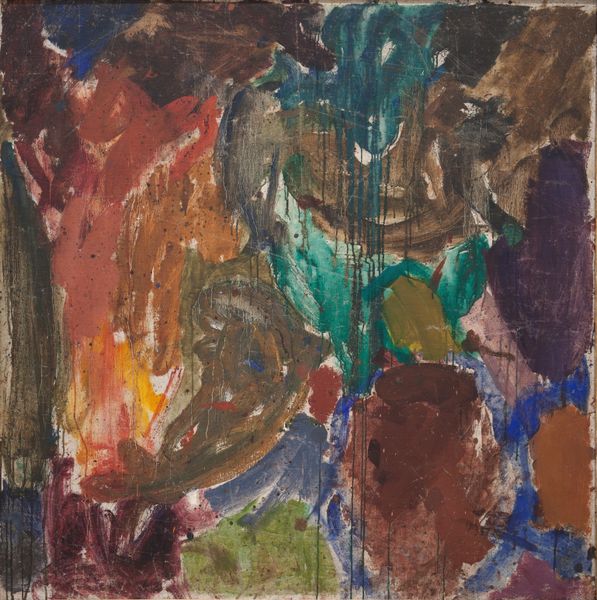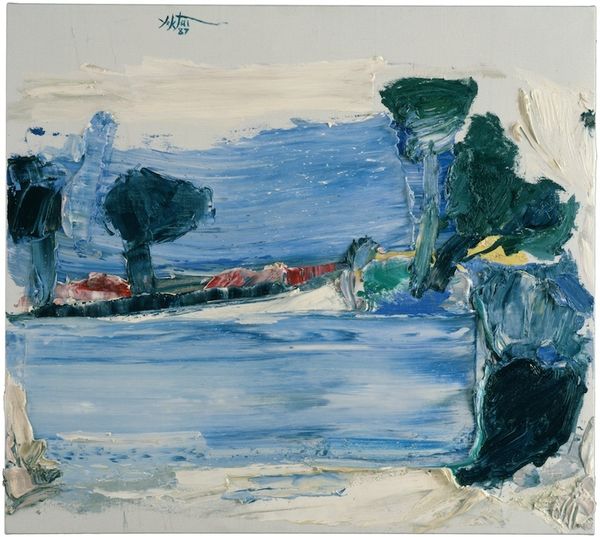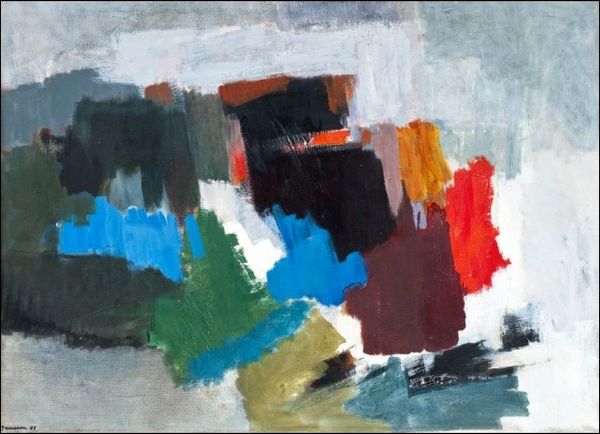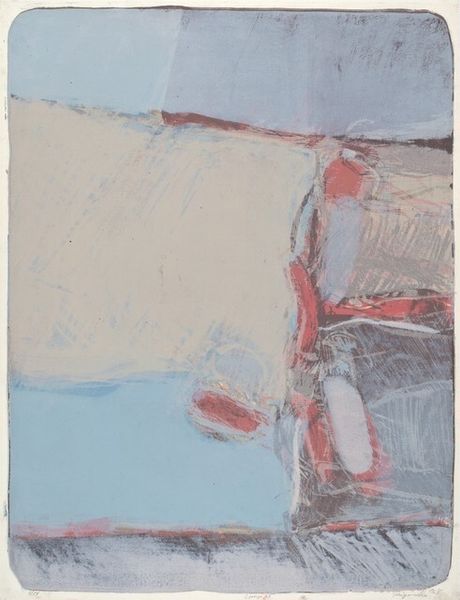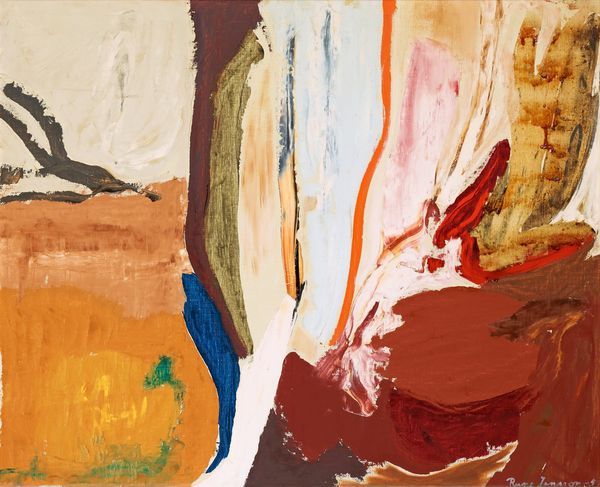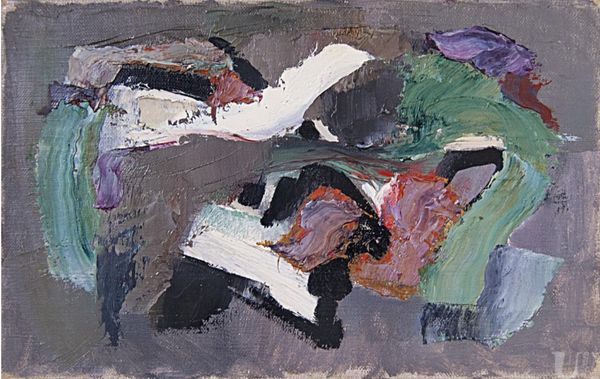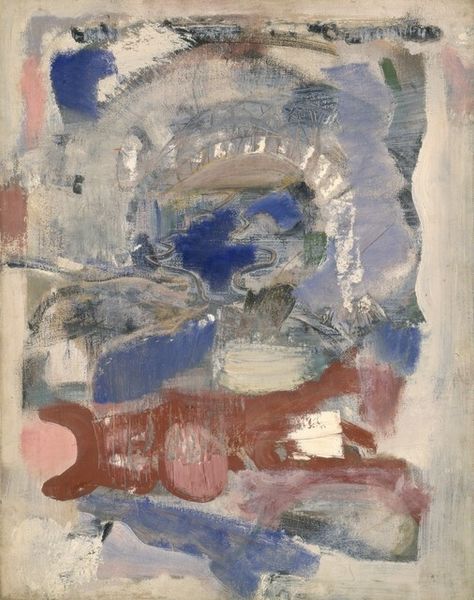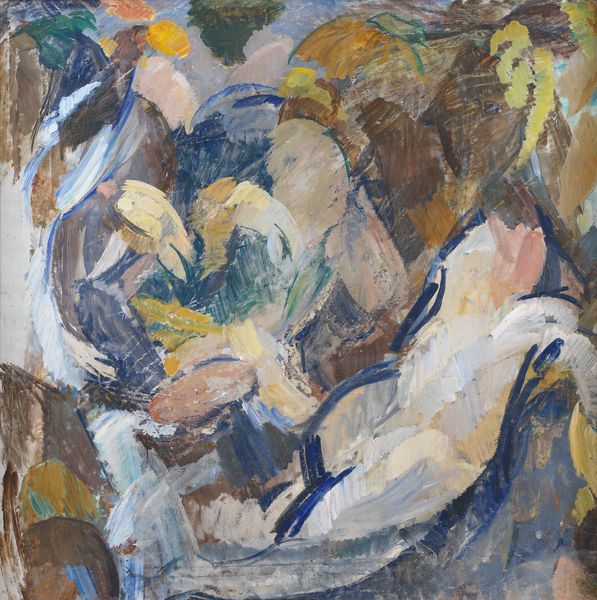
Dimensions: support: 1781 x 1991 mm frame: 1814 x 2017 x 50 mm
Copyright: © The Estate of Philip Guston | CC-BY-NC-ND 4.0 DEED, Photo: Tate
Editor: Here we have Philip Guston's *The Return*, currently residing at the Tate. The composition is very chaotic, with so many colors and shapes vying for attention. What is the cultural significance of Guston choosing this style? Curator: Well, think about the late 20th century. Guston turned away from pure abstraction, embracing figuration at a time when the art world heavily favored abstraction. Editor: So, in essence, this "return" is also a challenge to the established art world? Curator: Exactly! And not just aesthetically. His later work, especially, engaged directly with political and social issues, forcing the art world to confront uncomfortable truths. It made the public reflect on the art establishment itself. Editor: I see. It's more than just the image, it's a statement. Curator: Precisely. He used his art to push boundaries and spark dialogue. Editor: Thank you, that really helps me understand it better.
Comments
Join the conversation
Join millions of artists and users on Artera today and experience the ultimate creative platform.
tate 6 months ago
⋮
Guston was an important abstract expressionist painter in the 1950s, who controversially returned to figurative work in the late 1960s. His early abstract paintings were composed of shimmering combinations of short vertical and horizontal brushstrokes in pinks, reds and blues. Discussing The Return, Guston said that he saw the forms in the picture as being like figures who had been away for some time and who were now returning - jostling each other a little as they came. Gallery label, July 2012
